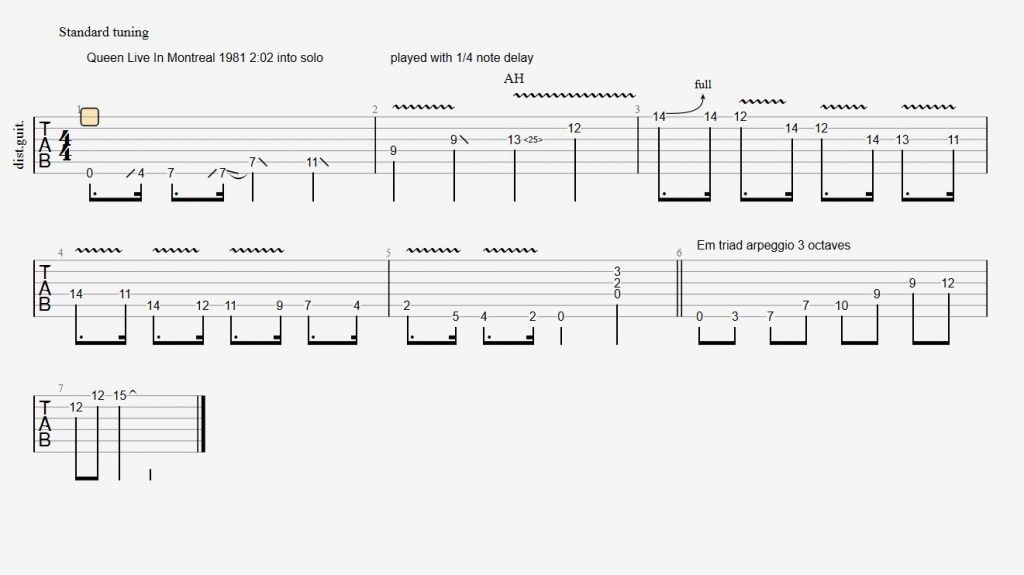Hi everyone, this week we are talking Brian May and his wonderful live unaccompanied solo from Brighton Rock during the live in Montreal recording from 1981.
Back in the 80s seems like every hard rock guitar player was using effects, whether it was Eddie Van Halen and his flangers, phasers and delays, or Yngwie with his volume delay technique or Steve Vai and his harmonizer.
But one of the first people I ever heard use delay as a device to create harmonies in a rock solo was Brian May who started doing this live back in 1975.
This example is a good study in 3 octave arpeggios and can help us guitarists traverse the neck better than simple positional playing.
You can see in the example from Brighton Rock that an E major triad arpeggio in 3 octaves opens the riff up.
If we dig into exactly what is happening as far as arpeggios, we get see that May is playing an E major triad in 3 octaves when climbing the neck:
If we just alter one note, we can do the harmonized trick in E minor in 3 octaves:
It is a great idea for every guitarist to learn how to play triad arpeggios of every ilk and then all the 7th arpeggios as well, in 3 octaves in many keys. This builds the ability to effortlessly travel the neck while improvising.
Here is the video component of the lesson:
Enjoy!



